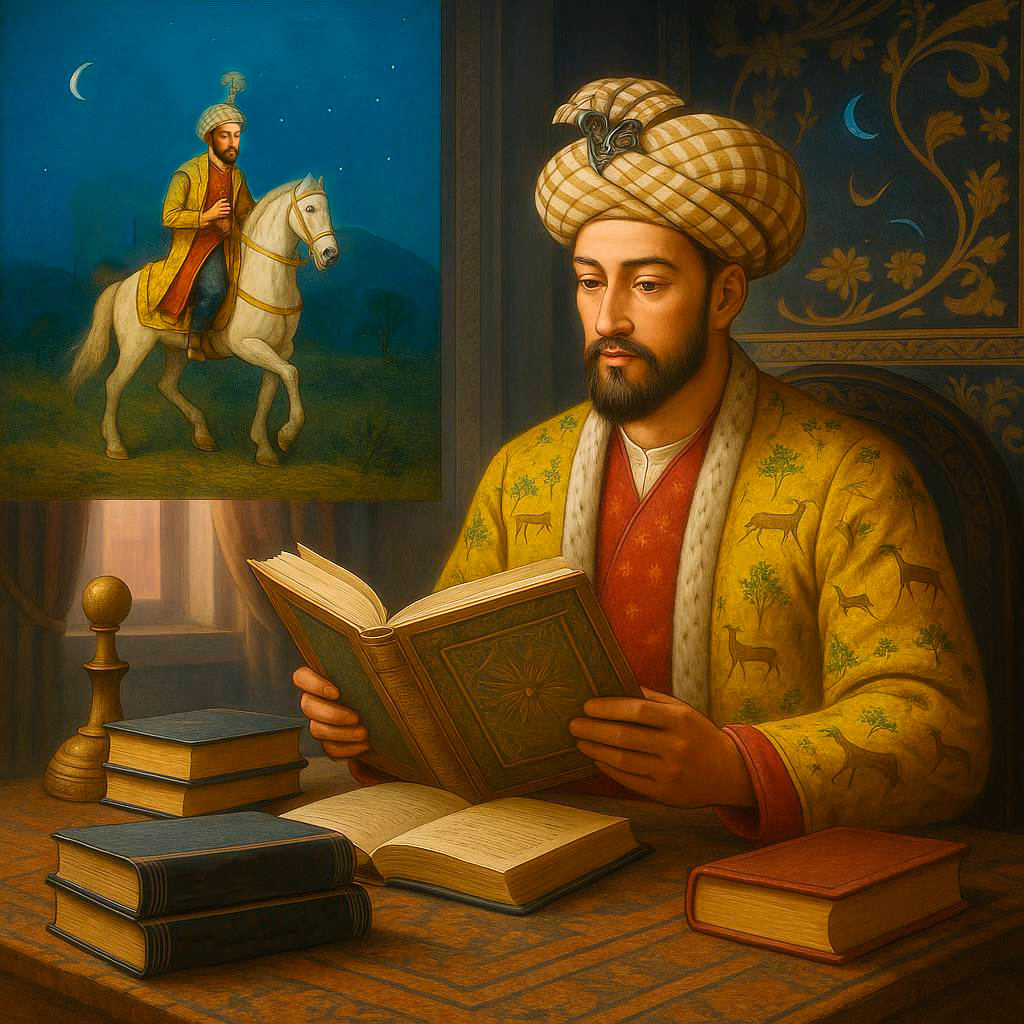Who was a lion on the battlefield and a patron in the field of knowledge?
🔴A legacy greater than the history of Herodotus and the memoirs of Caesar
🔴Reforms and popular consent in the era of Babur

On the stage of history, some figures are remembered with two faces: one as a ruler firmly holding the scales of justice, and the other as an enlightened patron of science and art. Zahir al-Din Muhammad Babur was one of such personalities, whose determination in governance and devotion to spirituality sealed his place in history as both a great statesman and a supporter of knowledge.
In the “Second Renaissance” section of the Center of Islamic Civilization in Uzbekistan’s exhibition, the “Babur Sector” showcases valuable exhibits about this historical figure’s life, his rule, and his patronage of learning and enlightenment.
As a descendant of the Timurids, Babur inherited both military prowess and political ability. In history, he sometimes appears as a mighty king, at times as a victorious commander in battles, and at times as a warrior who tasted defeat.
Mirza Muhammad Haydar, in his work Tarikh-i Rashidi, emphasizes that Babur stood out from his youth for his bravery, manners, and human virtues. Historical accounts note that after his victory in the Battle of Panipat in 1526, Babur ordered not the destruction of the city, but the creation of a garden. For that time, this was an unprecedented act. Through this, Babur Mirza demonstrated that as a ruler he was not only a military leader, but also a statesman who cared about the future of his people.
The ruler who ended 500 years of disorder
The English historian J.B. Malleson, in his book Rulers of India: Akbar and the Rise of the Mughal Empire, describes Babur as “by nature generous, caring towards his subjects, and a man of lofty vision”, emphasizing that he put an end to the five centuries of disorder in India.
Babur created a centralized system of governance and regulated tax collection. Previously, taxes were arbitrarily collected by the rajas, but he systematized them in accordance with Islamic principles. In the Baburnama, there are records about privileges granted to merchants and the transparency of tax collection. This economic policy was later continued during the reigns of Humayun and Akbar.
One of Babur’s most important administrative reforms was the establishment of a centralized governing system. He reorganized the state’s territories by dividing them into provinces and appointing governors for each. This strengthened control over local administrations and ensured regular tax and revenue collection. Moreover, Babur Mirza paid special attention to strengthening the principle of justice in the state. He organized the judicial system by appointing qadis and responsible officials to issue fair judgments. Thanks to his respect for the rule of law, order was established in the country and trust was consolidated among the people.
Two worlds in one persona
The other face of Babur was that of an enlightened and creative ruler. His most famous work is the Baburnama. As noted in Saifiddin Jalilov’s book Thoughts on Babur, the Baburnama can even be compared with the works of Julius Caesar and Herodotus. The difference lies in the fact that Caesar’s work is mainly important for Roman history, while the Baburnama provides invaluable information about the history, nature, and customs of Mawarannahr, Afghanistan, and India. For this reason, it can be called an “encyclopedic work”. The chronological consistency of the historical data and the richness of details have made the Baburnama one of the rarest sources, with a style often compared to that of Herodotus.
Babur also gave special attention to science and the arts. He established libraries in Delhi and Amritsar, introducing a cataloging system by subject and language an innovation unique for his time. In addition, during his reign, he created an environment that fostered intellectual exchange and the flourishing of the arts. He supported scholars, poets, painters, and calligraphers, providing them with the space to create.
Babur Mirza’s personality is revealed in history with two dimensions: on one side, he was a just ruler who sought to strengthen the state and establish order; on the other, he was a patron of knowledge, literature, and art, ensuring the eternal remembrance of his name. His victories achieved by the sword and his invaluable legacy created by the pen coexist in harmony. Therefore, Babur Mirza’s life serves as a timeless source of inspiration not only for his own era but also for today, as a vivid example of uniting justice, spirituality, and enlightenment in governance.
Gavhar Eshonqulova
P/S: The article may be used with reference to the official website of the Center.
Most read

Over 100 experts from more than 20 countries of the world are in Tashkent!

The Center for Islamic Civilization – a global platform leading towards enlightenment

The museum of the Center for Islamic Civilization in Uzbekistan has been further enriched: unique artifacts from different parts of the world have been presented as gifts











